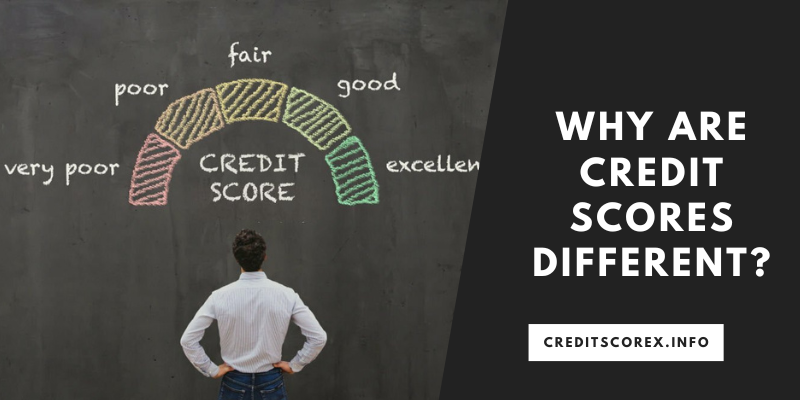
If you’ve ever pulled your credit score from different sources, you might have experienced the perplexing phenomenon of seeing different numbers. It’s a common source of confusion: Why are credit scores different, and what factors contribute to this variability? In this article, we’ll unravel the complexities behind the variations in credit scores and shed light on the key reasons for these differences.
1. Multiple Scoring Models
One of the primary reasons for variations in credit scores is the existence of multiple scoring models. The two most prevalent models are FICO (Fair Isaac Corporation) and VantageScore. Each model has its own proprietary algorithm for calculating credit scores, weighing factors differently. The result? Two distinct numbers representing your creditworthiness.
2. Different Credit Bureaus, Different Data
Credit scores are derived from the information in your credit report, and not all credit reports are created equal. You have three major credit bureaus—Equifax, Experian, and TransUnion—collecting and maintaining your credit information. These bureaus may have slightly different data due to variations in the way lenders report information to them. As a result, your credit scores from each bureau may differ.
3. Timing of Updates
Credit scores are not static; they change based on the information available in your credit report. However, the timing of when creditors report to the credit bureaus can vary. If one credit bureau receives an update before another, it can lead to differences in credit scores between the bureaus. Regular updates to your credit report can cause fluctuations in your scores.
4. Credit Score Version Differences
Within each scoring model (FICO or VantageScore), there are different versions that have been released over the years. For example, FICO 8 is a commonly used version, but there are newer versions like FICO 9. Different lenders and credit monitoring services may use different versions of the scoring models, contributing to score disparities.
5. Weighting of Credit Factors
Even within the same scoring model, the emphasis on certain credit factors may vary. For instance, one version of a scoring model might place more importance on payment history, while another may prioritize credit utilization. The weighting of these factors can lead to differences in credit scores.
6. Credit Mix and Unique Financial Profiles
Individuals have unique financial profiles, and the mix of credit accounts, types of loans, and other financial factors can vary. While scoring models aim to standardize the evaluation process, the uniqueness of each person’s financial history can contribute to differences in credit scores.
7. Specialty Scores and Industry-Specific Models
In addition to general credit scores, there are specialty scores and industry-specific models tailored for particular purposes. For example, a FICO Auto Score may be used by auto lenders to assess your creditworthiness for a car loan. These specialty scores can yield different results compared to traditional credit scores.
Conclusion: The Credit Score Mosaic
In conclusion, the diversity in credit scores can be likened to a mosaic, with various factors contributing to the overall picture. Understanding the intricacies of different scoring models, credit bureaus, and the factors that influence your credit score allows you to navigate the credit landscape with clarity. While variations are inevitable, focusing on responsible financial habits and monitoring your credit regularly are key steps to maintaining a healthy credit profile, regardless of the numerical differences.
Leave a Reply